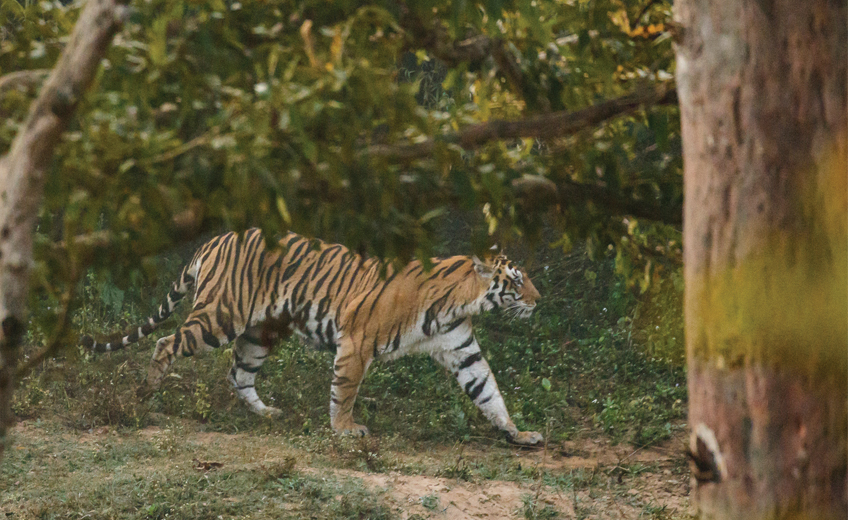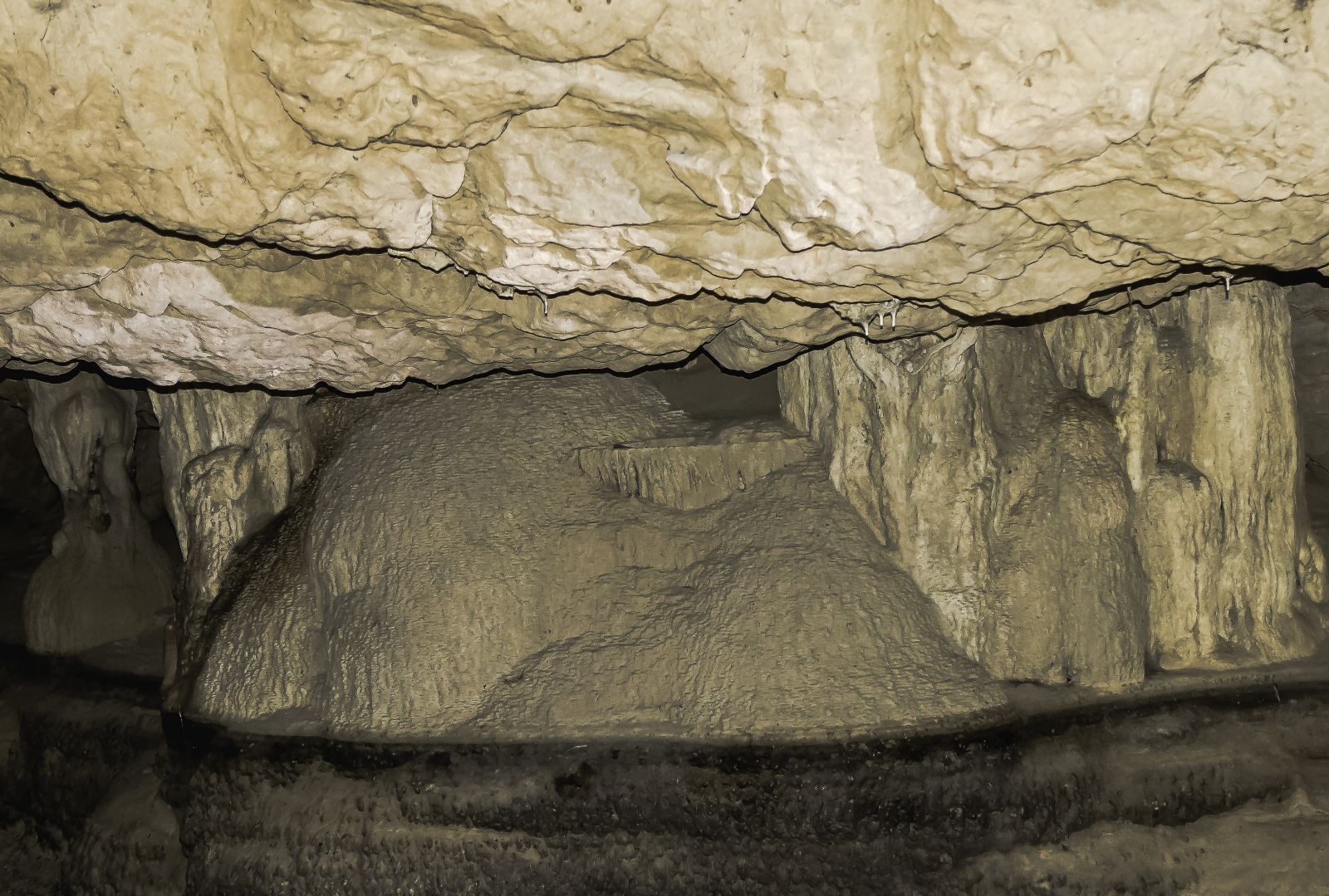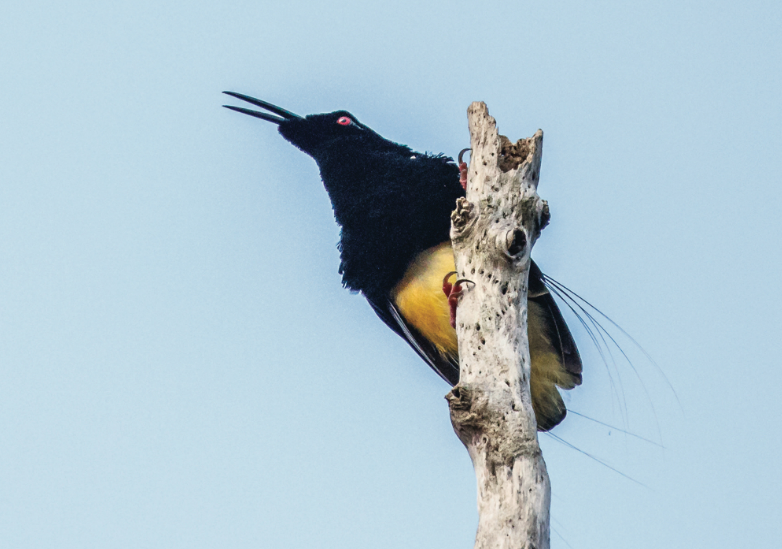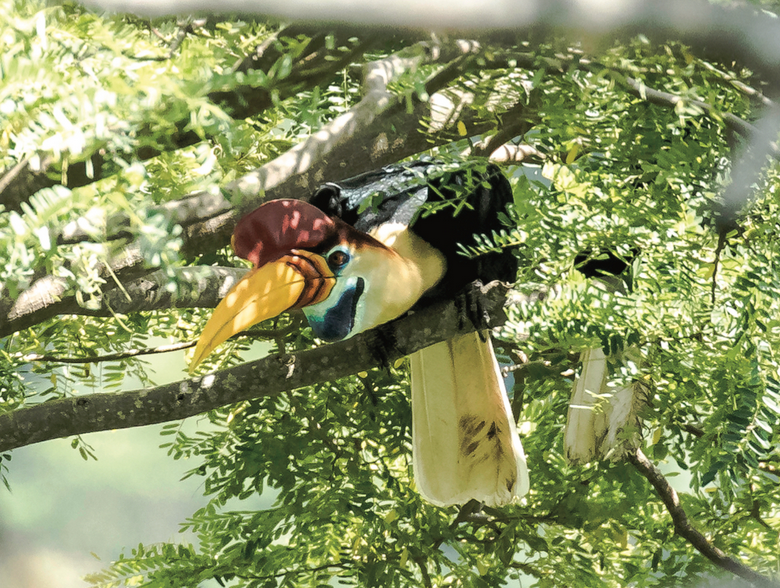From Pench I continued my search of Bengal tiger into Kanha National Park, the largest national park in Madhya Pradesh spreading across 2,000 sq.km including the buffer zone. The park is divided into 4 zones - Kanha, Kisli, Mukki, and Sarhi. I would focus my visit to the park in the Kanha zone which is the heart of the park and the premium zone. I looked forward to spotting more Bengal tiger in Kanha which is one of the oldest tiger reserves in India.I arrived in Kanha in the late afternoon and set up my base at Singinawa Jungle Lodge located about 20 minute-drive to the park’s main entrance. The lodge assigned a naturalist named Sachin Sharma to be my guide during the three-day stay.
Kanha and Pench form an area known as “Kipling country” where the famed British author, Rudyard Kipling, roamed more than 100 years ago collecting materials for “The Jungle Book”. Besides Kaziranga National Park in the State of Assam, Kanha is also a home to swamp deer known in Hindi as Barasingha and classified by the IUCN (International Union for Conservation of Nature) as a vulnerable species due to population decline caused by poaching and habitat loss.
I began my first safari in Kanha the next morning riding in a Maruti jeep. Kanha landscape comprises wetlands, grassland, and forest. The first wildlife I sighted were a herd of barasingha does and yearlings grazing in a grassland. Sachin explained to me that barasingha meant “twelve-tined” and that a barasingha stag carried antlers having 10 to 14 tines which were different from the other deer species.
The barasingha is a large deer standing 110 to 120 cm at the shoulder and has a head-to-body length of 180 cm. The average barasingha antlers measure 76 cm round the curve with a girth of 13 cm at mid beam. Stags weigh 170 to 280 kg while females, being smaller and lighter, weigh 130 to 145 kg. As we continued on the same road, a few minutes later I spotted a barasingha stag walking alone in a field with a drongo bird riding on its back. That stag had antlers with 10 tines. When I finished photographing the barasingha, a female elephant with a mahout riding on her neck walked out from the opposite forest with a calf following closely behind.
Sachin talked to the mahout in Hindi for a few minutes, then turned to tell me that the mahout and the elephant were a part of the patrol to spot and protect Bengal tiger. The mahout saw a tigress and a spotted deer she had hunted, and she had called her 3 cubs to come out from the hiding places to feed. The mahout didn’t think the tigress and the cubs would leave the prey and come out today. They would finish the deer and would go to drink at a pond deeper in the forest.
Having heard that, Sachin suggested we moved on to search for other tigers. Kanha is a beautiful park with a number of wetlands where we found several species of water birds such as northern pintails, little cormorants, common teal, and little grebes. We parked near a wetland observing a herd of 10 barasingha with 3 stags feeding on aquatic plants. Although we missed a Bengal tiger, we saw a lone jackal walking on the road looking for food. As we were ending the day at the park, we sighted a herd of spotted deer and more barasingha on the way out, but still no tiger.
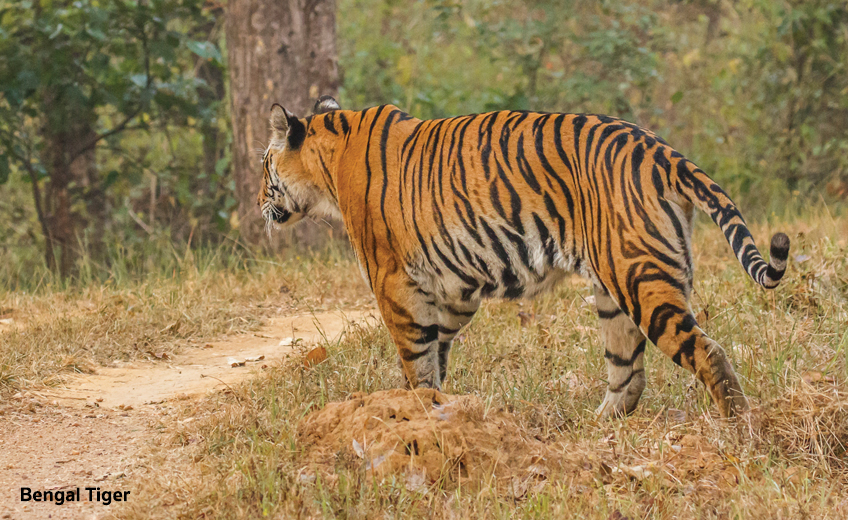
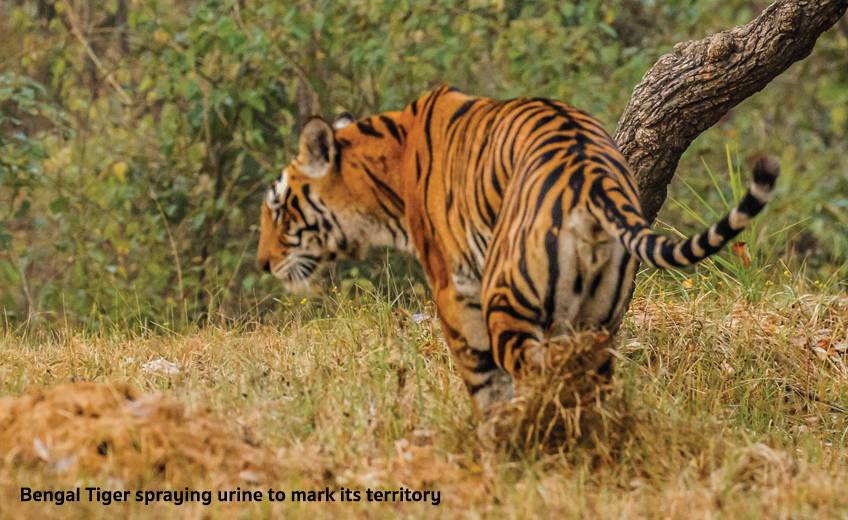
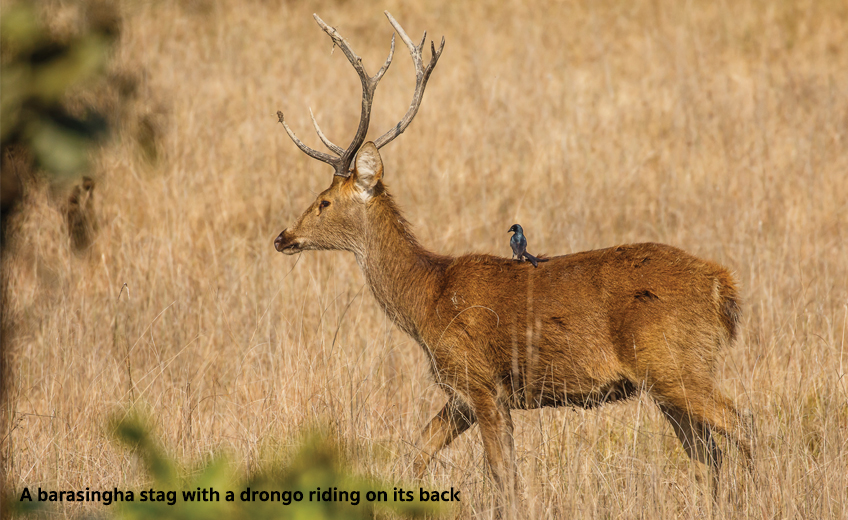
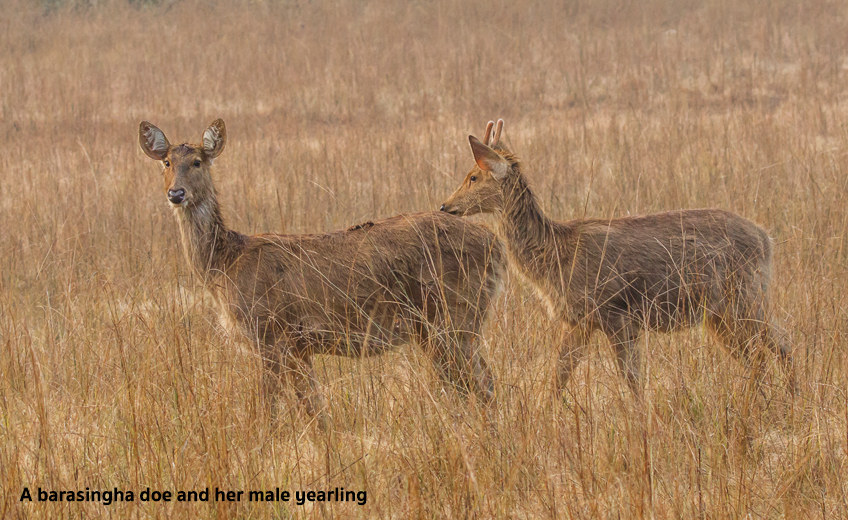
On my second day at Kanha, we drove around the park spotting again barasingha, spotted deer, and birds which we didn’t see the day before such as a juvenile black stork, two black ibises, an Indian roller, a changeable hawk-eagle, a spotted owlet, and a collared scops owl. Again I was disappointed as the day ended without seeing a tiger. I quietly asked myself, “What happened to the tigers which have been seen regularly in Kanha?” All I could do was hoping to see a Bengal tiger the next morning which I would have my last game drive in Kanha.
From the park entrance Sachin drove directly to the spot where we met a mahout on elephant patrol on the first day hoping to see the tigress and her 3 cubs coming out from the forest. Thirty minutes had passed and no tiger, so we decided to move on. As we approached a ranger station, Sachin stopped the car at a well where a ranger was filling a bucket with water. The ranger told Sachin he heard several alarm calls of barasingha just a few a minutes ago, and there might be a good chance of seeing a tiger.
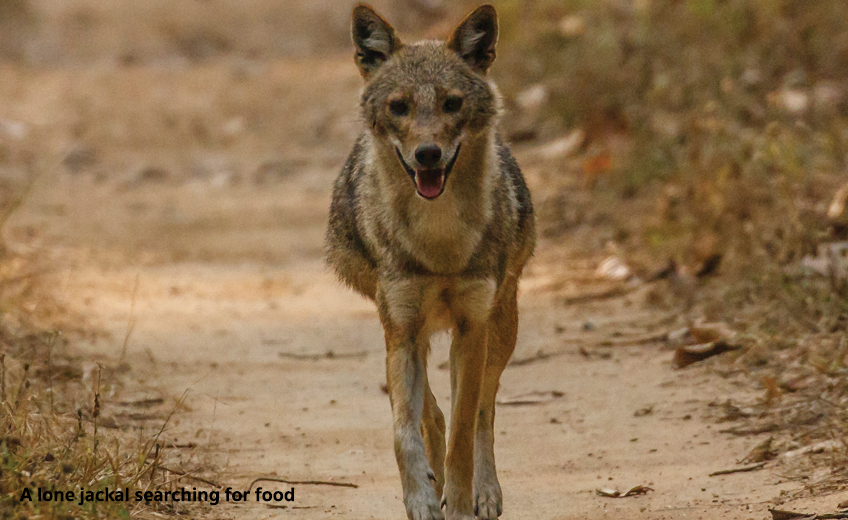
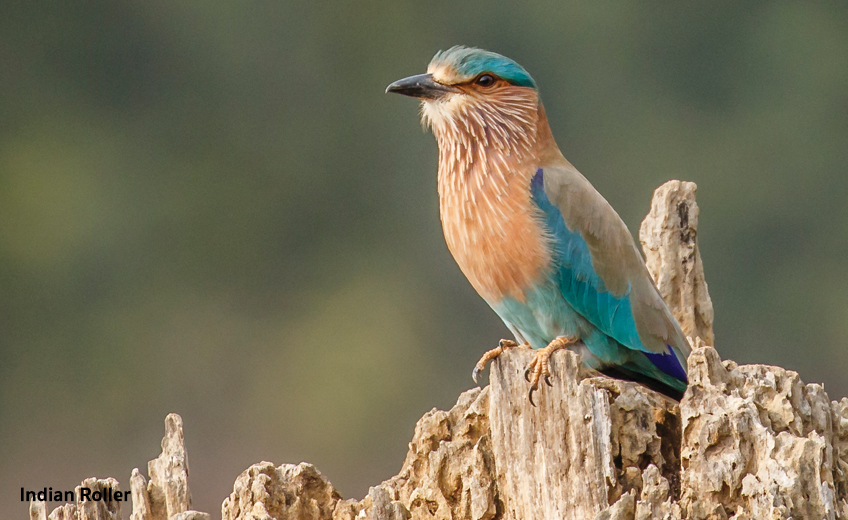
Sachin thanked the ranger and headed in the direction of the alarm calls. Five minutes later we saw 4 jeeps parking on the road, and an occupant of one of the jeeps excitedly told Sachin that a tiger had just crossed the road and disappeared into the forest. Sachin was an experienced guide who knew the park well and also the nature of the tiger. He turned to tell me he knew where the tiger was heading and told me to sit tight. He then sped the car on the road heading to the other side of the forest as the other 4 jeeps followed behind.
It took 10 minutes of fast driving on the dirt road of the park to reach a spot which brought a smile, excitement, and relief to me as I saw a Bengal tiger coming out of the forest less than 200 meters away. Sachin stopped the car about 100 meters from the tiger to allow me to steady the camera and take photos. The tiger walked to a tree and sprayed urine at the tree root to mark its territory, then walked to the other side of the road and disappeared among the bushes.
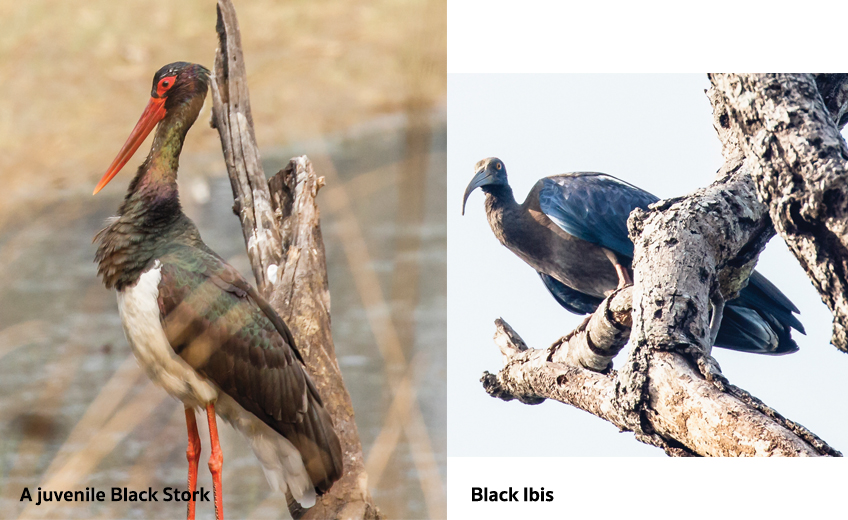
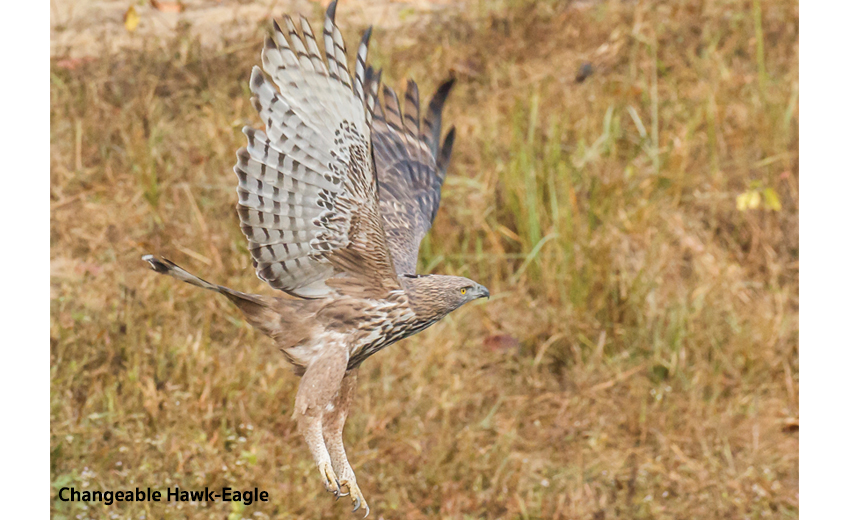
I patted Sachin on a shoulder and thanked him for this tiger. Sachin told me that it was a tigress and he had seen her several times to know her movement. I asked him, “Was that it?” Sachin smiled and replied, “I have a surprise.” He started the jeep and move it forward about 300 meters then parked at an opening among bushes and trees. “Get your camera ready at the opening,” said Sachin with confidence.
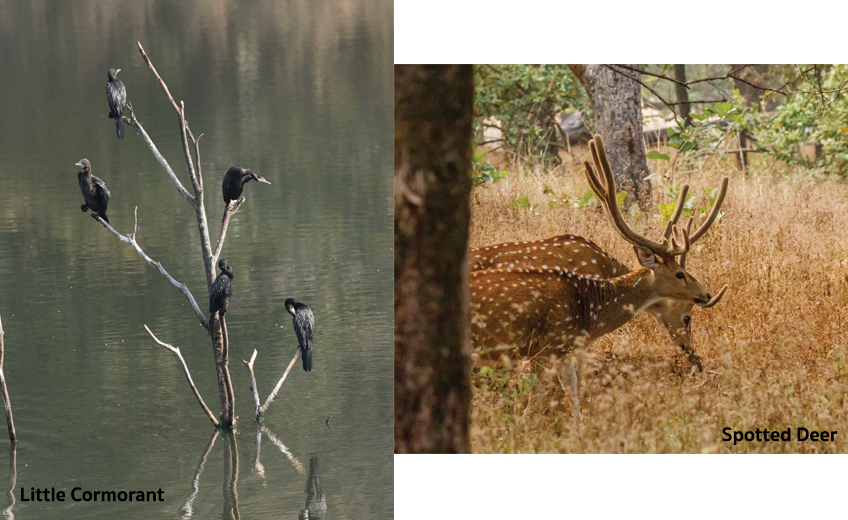
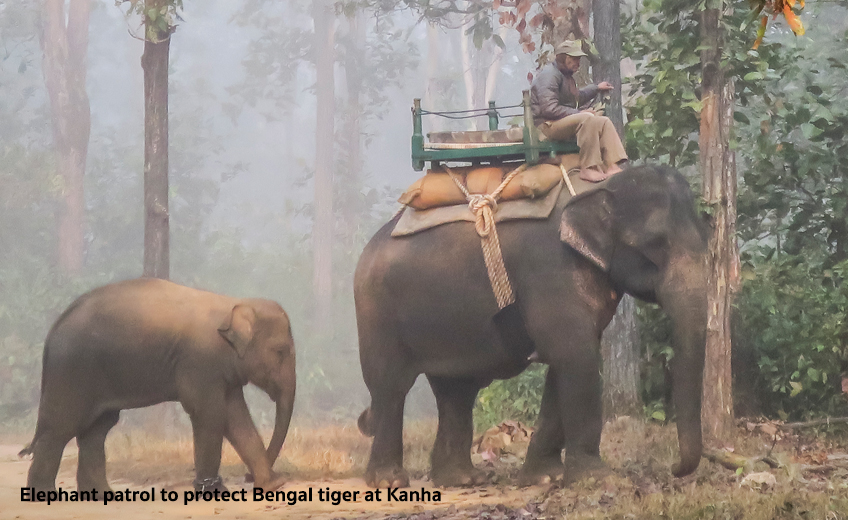
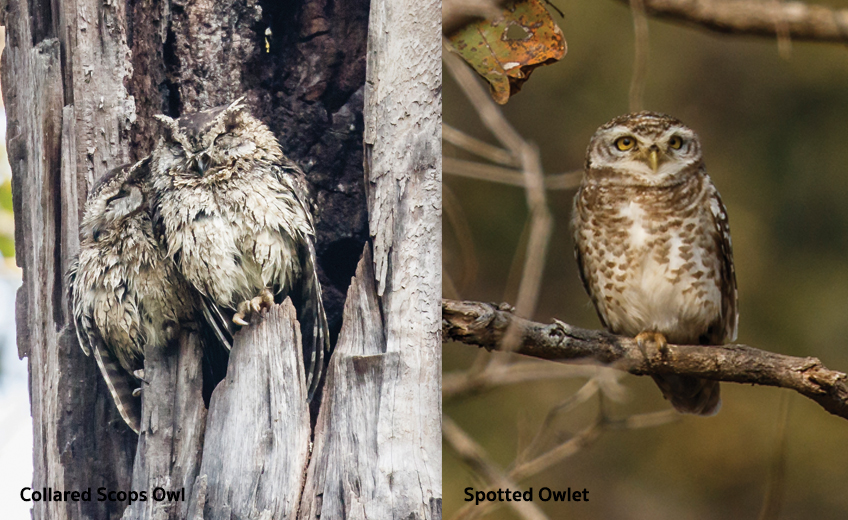
I held my camera ready to shoot, keeping my eyes at the opening. Five minutes later, true to Sachin’s words, it was indeed a surprise when I saw the tigress walking slowly on the other side of the river through the opening. I had less than 10 seconds to capture her movement. I made 5 shots before the tigress disappeared again among trees.
Sachin told me during the ride back to the park’s main entrance to return to the lodge that the tigress was making her round of patrolling her territory. She was a creature of habit, and Sachin knew exactly when and where she was heading. I thanked Sachin again for helping me to fulfill my objective of sighting and photographing a Bengal tiger at Kanha. It was a perfect way to end my adventure in central India.


